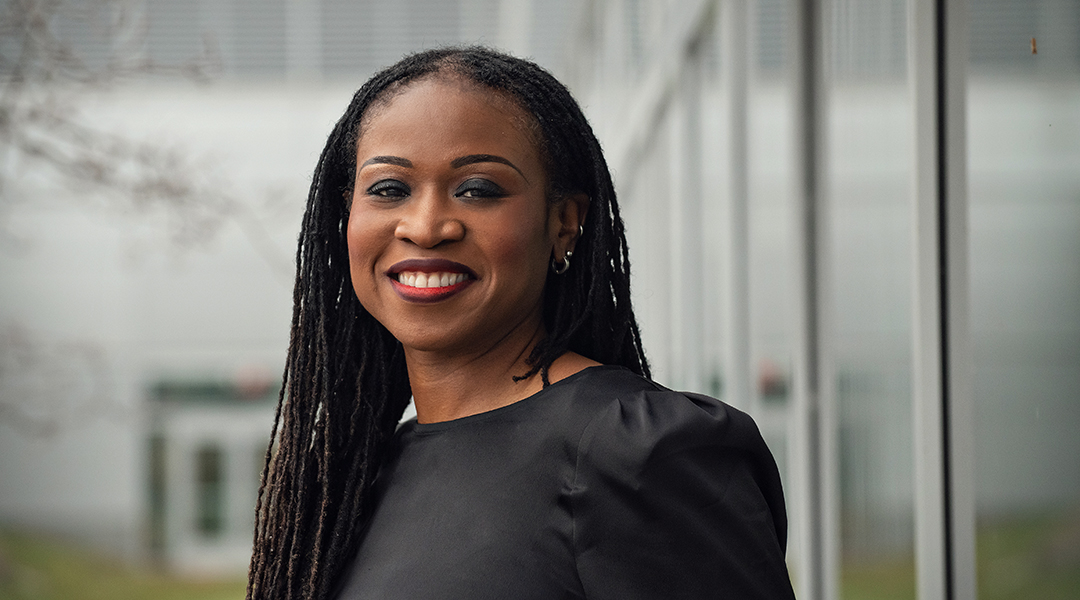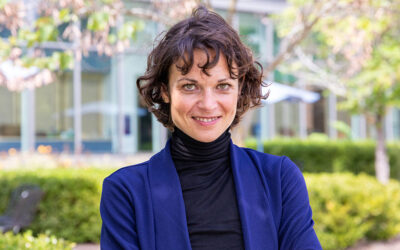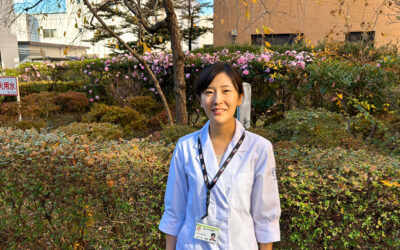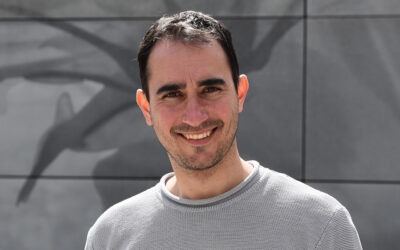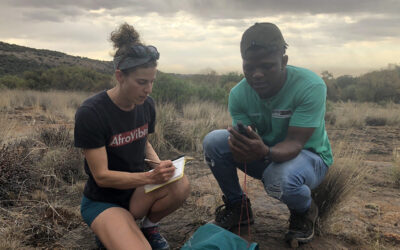Talking to Lola Eniola-Adefeso is both motivating and inspiring. Born in the United States but having grown up in Nigeria, she realized at a young age that the sciences were her forte.
Years later, Eniola-Adefeso is principal investigator of a chemical engineering lab at the University of Michigan where she strives to understand the relationship between the body’s cellular inflammatory response and blood flow dynamics so that her group can design specialized “particles” to treat a multitude of diseases.
Outside of the lab, Eniola-Adefeso strives to create equal opportunities for women and underrepresented minorities in STEM with a particular focus on the field of engineering. Her driving principle has always been to “leave any and every space better than [she] found it”.
Her advocacy work demonstrates her commitment to supporting and diversifying the next generation of scientists. As graduate chair, she has created a scheme to mentor and support students, and is involved in the University of Michigan’s NextProf Nexus program, which aims to support minority students and women in academia by helping them meet potential collaborators, prepare for the academic job market, and learn about the faculty job search process.
Last year, she and a group of US-based biomedical engineers called for an end to racial funding disparity evident in the National Institutes of Health’s funding programs. The piece, published in the journal Cell, outlined how Black scientists of similar academic standing to their white peers are less likely to receive funding, which limits their ability to obtain tenure and progress their careers. This leads to a loss of talent at all levels of academia.
We sat down with Eniola-Adefeso to hear more about her research, advocacy, and to catch a glimpse into the world of biomedical engineering and how it can be used to save lives.
When did you decide to become a chemical engineer?
It’s a little bit embarrassing, but real in the sense that there was no deliberate move towards engineering. In fact, growing up in Nigeria, engineering was often a profession reserved for men and women were steered toward careers in healthcare and medicine.
Growing up, I was always going to be either a pharmacist or a medical doctor because I did well enough in math and science. When I came back to the United States at the age of 16, I was doing programs around that space and, in fact, because of the community that I came into, it was quite customary for some of the adults to encourage folks like me to think about doing a quick two-year degree in nursing, which would allow you access to a decent enough paying job. You could then go on and decide what else you wanted to do with your life. I started my college career thinking I would do exactly that.
It was actually an interesting experience in my first biology course that really led me into engineering. I think halfway through the course I realized that I had a headache every lecture that was linked to not having anything quantitative to grab onto when you discuss biology.
As somebody who is always used to asking the question, “Why?”, biology almost never had a direct answer, at least at that level. For me that was painful. I remember one day leaving the course saying to myself, “I cannot do this course and I cannot be in medicine. I need to figure out what I could do.”
At the time in that community college, their career counseling center consisted of a computer. You go in and it asks you a series of questions and it prints out recommendations of majors. When I did that, the first major on it was chemical engineering.
I should say, before that experience I had been with family, and we were having a conversation about computers. I kept jumping into the conversation in a way that one of my uncles said I seemed to be intuitive with this technology and I should go for engineering over nursing.
That seed had been planted, and so, when the computer told me to consider engineering, I just said OK, and it was the best thing that ever happened to me.
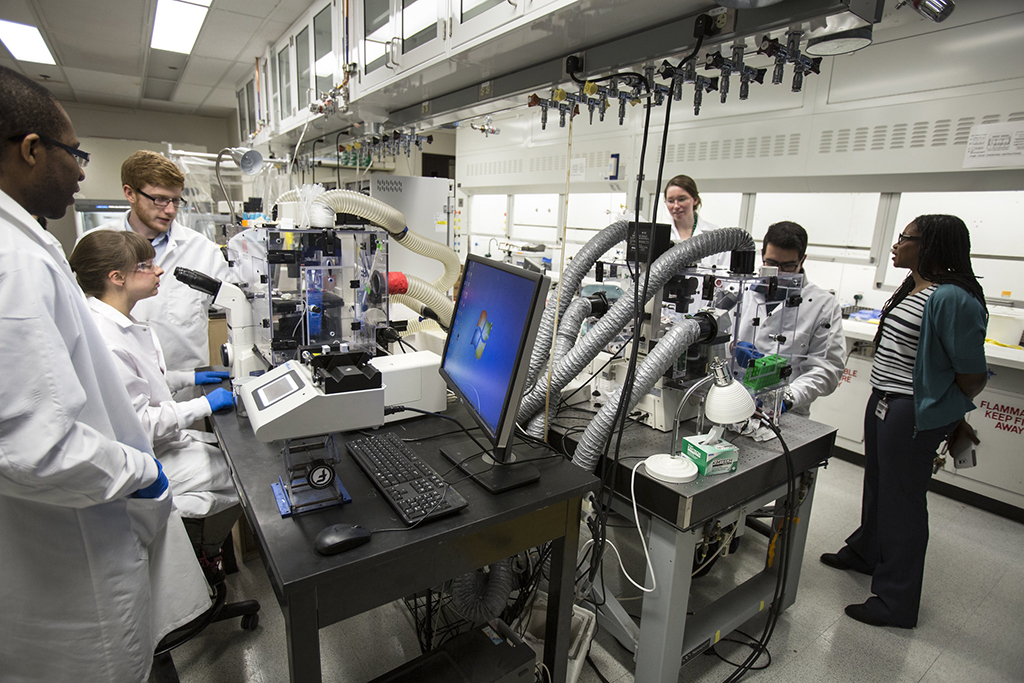
Did you have mentors who supported you?
I was resistant to the notion of mentors for a long time, and part of that was probably me being defensive in the sense that people don’t randomly come up to folks like me and nominate us. For a long time, I didn’t get opportunities to interact with mentors in the way you might traditionally describe, but I did have interesting experiences.
The one that was the most important was in one of my first undergraduate chemical engineering courses. I had just transferred from community college to a four-year college. The demographics were a little less diverse and then you go into an engineering classroom, and I remember being the only person of African descent in there. Needless to say, my first exam did not go as well as I was used to doing, and it had a massive impact on my psyche — enough to say to myself that I should probably not do engineering. You don’t go from being an A student to completely bombing an exam.
I went to the instructor, Julia Ross, who happened to be an assistant professor at the time, and said I was going to quit engineering because I did so poorly on her test, and she just laughed. She said this was the silliest thing she’d ever heard, and she would not let me quit.
That singular experience is why you are able to have this conversation with me today. The level of confidence that she had in making that proclamation that I could be an engineer was enough to carry me through. I went from that horribly failed exam to getting an A in the class.
When I started my academic career, how I interact with and grade my students is mapped from this one experience. For example, if you front load all the points, students like me, who failed the first exam, are then destined to fail the class. Having a flexible point distribution leaves room for students who are not polished but have the talent to find their way and then make it. You can imagine what a big boost that was for me to turn that around and think that I definitely belong in engineering.
Can you tell us a bit about your career and research?
There’s an interesting journey to my research. The class that I was struggling with at the undergraduate level was fluid flow. That is one of the core courses in chemical engineering, and I remember leaving it going, “God, thank you and good riddance.”
I survived but then I ended up going to work for Julia Ross, whose research at the time was trying to understand how bacteria interact in the bloodstream. So, I did some research in that space, looking at fluid flow and bacteria adhesion. It was my first time thinking I could still be a chemical engineer and think about medical problems. I’m not a clinician but I can have an impact in how these diseases are treated.
That really got me excited about graduate school and I was attracted to the lab of Dan Hammer, who was interested in understanding how white blood cells — especially neutrophils, which take up pathogens — interact during the body’s inflammation response. I spent my graduate school days trying to understand how to create particles, artificial cells, that could mimic this behavior.
After that, I went and did a postdoc with immunologist Wayne Smith because during graduate school, I mostly worked with the particles, not cells. I wanted to learn about blood cells and neutrophil interactions, and my goal was to try and understand changes in the blood vessel wall when you encounter heart disease to figure out what kinds of vascular proteins are expressed. I was able to show that if I incorporated the cell surface receptors of white neutrophils — which trigger several pathways within the cell that eventually allow pathogen uptake, for example, into my particles — I could actually capture the particles and see the same steps we were seeing in white cells.
My academic career now combines all this to try and understand the expression patterns of these cell surface receptors in cardiovascular disease.
We were going to leverage the idea of zip codes for a specific vascular targeting system to ensure that only the right cells are targeted by our particles. We would look for the expression patterns of the presented surface receptors of the cells, which are unique to the disease the target cell is affected by and build drug carriers onto our particles with targeting ligands that only recognize the surface receptor expression pattern of the diseased cell and facilitate a targeted delivery.
My students were excited about this idea, and I remember we had the meeting where one was going to focus on the drug carriers themselves, making particles, and one was going to focus on the endothelium to see how shear stress impacts expression with the understanding that we could mimic these changes in blood flow patterns during disease and we would watch how protein expression changes.
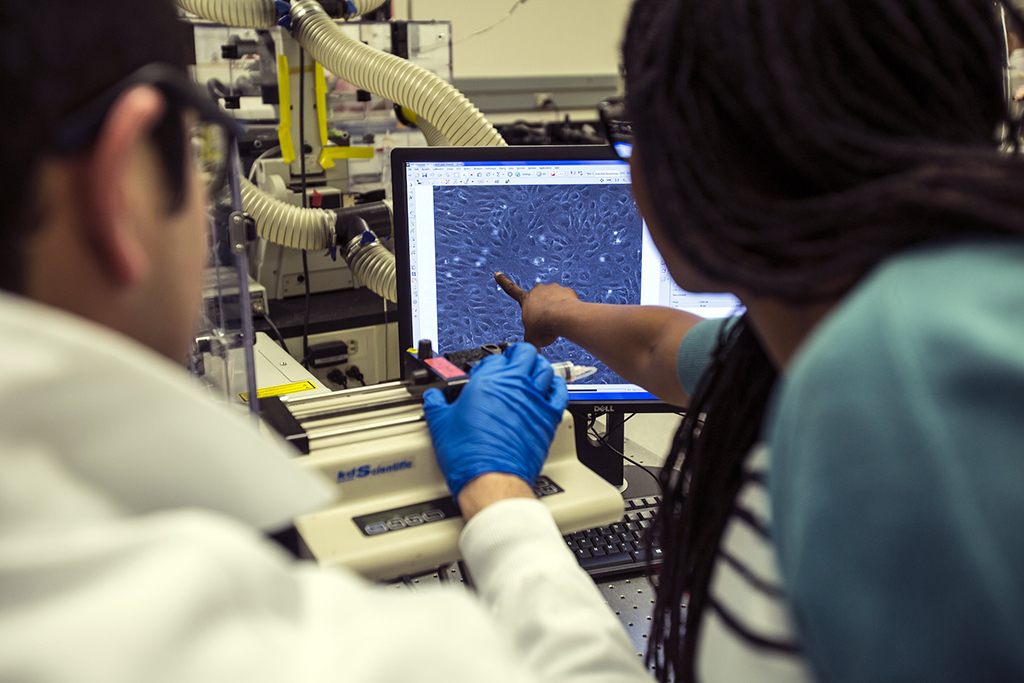
Our plans shifted, however, when one of my students found an image where a researcher from another group cut through a vessel, and you could see the blood filling up inside it. We were surprised by the number of red blood cells inside the vessel and wondered how a particle we had previously developed and were adding in such low concentrations relative to the concentration of red blood cells could find and target the blood vessel wall.
That completely changed the direction of my lab. We went from a drug carrier design to a transport lab. We were going to try and understand how particles of different sizes — that we could potentially use as drug carriers — navigate the bloodstream.
We were not prepared for the many different directions that pivot would take us.
In the short term, we focused on mechanical interactions between red blood cells and drug carriers, trying to understand how those carriers can localize in the blood vessel wall. I think my lab was one of the first to publish on this idea; that the size of the drug-carrying particle determines how well it will get to the blood vessel wall, and that for diseases like cardiovascular disease, this particle distribution is very critical. That was actually quite revolutionary at the time.
We have since learned that there are intricate interactions between white blood cells, red blood cells, and platelets in ways that impact drug carrier systems. We have zoomed in on each component of the blood to understand that more. Our work with sickle cell disease, for example, recognized that the rigidity of red blood cells is very important in understanding how various particles generated by my lab distribute in a blood vessel filled with deformed red blood cells.
Can you tell us about the significance of the rigidity of red blood cells?
Red blood cells are probably the most passive in the blood. They just float around and eat oxygen. It turns out, though, that red blood cells are intimately involved in how other cells behave. They are naturally deformable and stay packed nicely together in the blood’s “core flow”, pushing white blood cells and platelets to the blood vessel wall, where they need to be.
When red blood cells are altered, like in malaria, sickle cell disease, and spherocytosis, we see downstream impacts in how these other cells function. Often, diseased red blood cells become adhesive or sticky, and because they are rigid, they interact with the blood vessel wall in ways they are not supposed to. This results in additional damage.
The interesting piece here is that we know nanoparticles have long circulation and stay in the core flow with the healthy red blood cells, which scientists have started to leverage for drug delivery. My colleague at Harvard can get nanoparticles to bind to the surface of red blood cells and, as they transport to capillary-type vessels, like in the lungs or the brain microvasculature, the red blood cell can transfer the nanoparticle to the endothelium [cells that line the wall of the blood vessel]. It turns out that this is a better way of getting nanoparticles to the wall in the capillaries compared to when we were just injecting them and hoping that they went through.
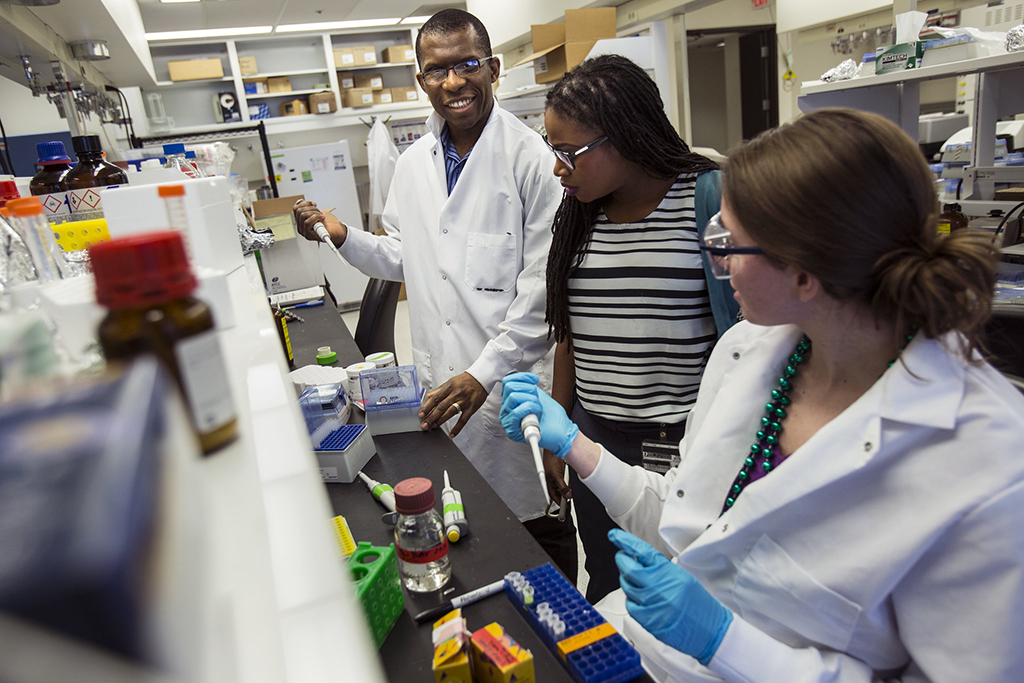
Can you give us a glimpse into your future research plans?
We are now in love with this idea of particle drugs. Our work started with a collaboration with a colleague at UC Riverside using particles to deliver aspirin, and as a result, we have started look in new directions. In particular, we did some work looking at particles in neutrophils and recognizing that neutrophils, unlike other phagocytes, love rod-shaped particles because they naturally take up and destroy bacteria, which are shaped like a rod.
So, they gobbled them up much faster than spherical particles. Then we started to think about how we can make rod-shaped drug carriers. We are exploring different fabrication platforms and looking at making different small molecule drugs into particles, from anti-inflammatory to steroids to peptides, with the idea being rather than the drugs in a carrier, the carrier is the drug.
You are a strong advocate for women and minority students in STEM. What changes need to happen in order to achieve equality in science?
It is one of those big and circular problems. We all get overwhelmed with where to begin. We need more representation in science and engineering, and we need them at all levels. The workforce is not there, especially in engineering. It is devoid of women and other underrepresented groups, and then you go to the graduate level and there is also this void. Then you go to the faculty level and it is even worse.
The question is where to begin? This goes back to that idea of system-level thinking. When we think about chemical factories, we determine what the most important unit is, and you start your change there. That is the unit you spend your time on because you know that if that unit is fine, every other unit will easily adjust to the output.
I have approached this in the same way, by asking what the most sensitive point in this pipeline is, and I think it is the faculty level. The encounter I had with Professor Julia Ross changed my life in a way that no other outreach could have done. If we put more faculty like her in the classrooms, there will likely be more students like me, women and minorities, in engineering that succeed.
A big piece of that is inclusion. When you are in an environment where you feel you belong, there are a lot of things that become easy to tackle. You are not dealing with the isolation that comes with not belonging and again, going back to my undergraduate experience, before I talked to the faculty, I was feeling isolation in that course and when I encountered Julia, I no longer felt isolated. I felt like I belonged, and that is an important part of the framework.
How do we get young women and underrepresented groups into faculty positions where they feel they belong? Where are they included and treated equitably? Because when you have a diverse faculty, you will easily have diverse students persevering in their education.
How can we begin to address racial disparities such as these to help Black scientists succeed?
I think disparities tend to fester when we do not talk about them, and when people who are not impacted don’t find it to be an issue. We are in a good time now, where people are more comfortable with having this kind of discussion. It is still a slow-moving train, but people are thinking about it and learning more about it.
There are many people who started this year without understanding the funding disparity that exists for Black faculty in science and engineering. Importantly, they have no idea how bad it is when it comes to low African American, Hispanic, and Latin X enrollment in degree programs in science and engineering.
I think that growing awareness has been very positive. People are realizing they have a role to play in educating a diverse workforce for our country and for our world. It has benefits that extend beyond our boundaries and part of that responsibility is to make sure every student in my classroom regardless of their gender or their sexual orientation or background have access in ways that are beneficial and allows them to be successful in any degree program.
What is …
Your favorite hobby?
Cooking
Your favorite travel destination?
Italy
Your favorite food?
In this last couple of weeks, it’s been fish tacos. I love every kind of seafood, from street tacos to high end seafood cuisines.
A good read you can recommend?
I think, at least for Americans, that part of how we make change is recognizing that the world is bigger than us and there is talent throughout the globe, including in literature. I would say for folks who are open to exploring the literature on the African continent, they should try Chinua Achebe’s Things Fall Apart.
A song you can’t get enough of at the moment?
My son just participated in a choir event and the song that he sang is stuck in my head called “Only a Paper Moon”. There is a nice rendition of this song by Ella Fitzgerald from the 1960s.
Your favorite movie?
Easily Lord of the Rings, The Return of the King
Who would play you in a biopic?
Kerry Washington
A discovery (any research field or time) you wish you would have made?
I wish I would have been involved in studying the beginning of the Solar System and that imaging of a black hole. I wish I had made that discovery because the ability to get a glimpse of something we thought existed for hundreds of years but couldn’t prove is super cool.
A person (famous or not) you would like to have a coffee with?
Harriet Tubman — I love her because she was in many ways a warrior, ahead of her time, and she’s the Blackest of all Black women. She did so much and in many ways she did it in plain sight. I am deeply a feminist and am attracted to strength, and she is the definition of courage and strength.

